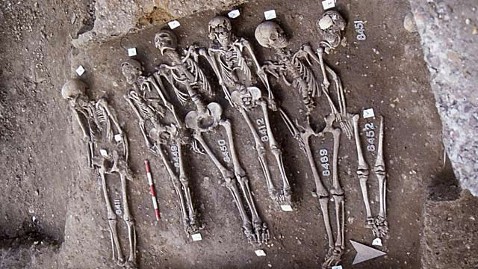Decoding the Black Plague
The Black Death that killed 50 million Europeans six centuries ago is the ancestor of “all the modern plagues we have today worldwide,” say the scientists who decoded its entire genetic structure from the teeth of long-dead Londoners.

“Every outbreak across the globe today stems from a descendant of the medieval plague,” said Hendrik Poinar, a geneticist from Canada’s McMaster University, and leader of the international team whose accomplishment includes being the first to reconstruct the genome of any ancient pathogen. The findings should allow scientists to determine how the notorious bubonic plague, which ravaged Europe between 1348 and 1351, evolved over the centuries, he said. That plague is the genetic ancestor of the plague that claims an estimated 2,000 lives every year.
The research team, headed by scientists from McMaster and the University of Tubingen in Germany, analyzed DNA in a strain of the Yersinia pestis bacterium retrieved from skeletal remains of five people who perished in 1349-50 and were buried in London’s East Smithfield “plague pits,” beneath where the Royal Mint stands today. The scientists extracted the DNA from the victims’ dental pulp.
Poinar said there had been few changes in the genome of the bug since it ravaged Europe. The research team could not tell if those changes contributed to the plague’s increasing disease-causing power. “The next step is to determine why this was so deadly,” Poinar said.
Genetic information drawn from the 14 th century victims allowed the scientists to determine that the plague strain that proved one of mankind’s deadliest biological foes dated to sometime between the 12 th and 13 th centuries. That helped differentiate it from a sixth century Justinian plague, which moved through the Eastern Roman Empire, wiping out an estimated 100 million people.
The findings, published today in the online issue of the scientific journal Nature, open the door to understanding more about the history and origin of other infectious diseases, said Johannes Krause of the University of Tubingen, another lead study author. “This will provide us with direct insights into the evolution of human pathogens and historical pandemics.”